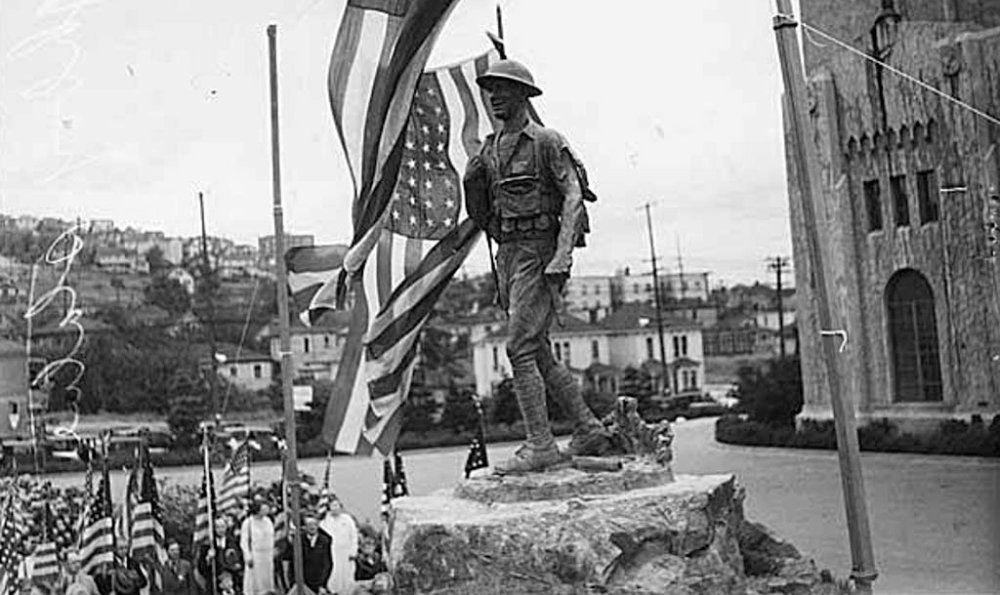Seattle has a long history with a 3,500-pound statue of the Great War (WWI) called the “Doughboy.” Originally named “Bringing Home the Bacon,” and later “Armistice,” it is a grand but controversial example of sculptor Alonzo Victor Lewis’s patriotic style.
Born in 1886 in Ogdon, Utah, Lewis studied with western artist E.S. Paxson in Butte, Montana. He won a gold medal for life drawing at the Chicago Art Academy in 1906. After visiting New York and Mexico, where he did a portrait of President Porfirio Diaz, Lewis set up a studio in the old Ferry Museum in Tacoma. His favorite materials were granite, clay, plaster, and concrete.
By the early 1920s Alonzo Victor Lewis’s fame was recognized throughout the Pacific Northwest and beyond. His mostly somber herculean statues loomed in many parks, nooks and street-corners. Lewis was a conservative classicist, so it was no surprise that most of his commissions came from such traditional groups as the Knights of Columbus, the Automobile Club of Washington, the Grand Army of the Republic, and Chambers of Commerce.
Lewis’s “Doughboy” statue, formerly behind the old Seattle Center, had a controversial existence. Originally commissioned as a temporary plaster figure to commemorate the reunion of the old 91st Division, it grew in Lewis’s mind and under his hands as a permanent war memorial.
Carl F. Gould, Seattle’s preeminent architect in the first half of this century, observed that the old “Doughboy” was carrying battlefield souvenirs presumably plucked from the bodies of his victims. Gould was also quoted as saying that the “Doughboy” had a “bestial and animal expression on his face.” Those remarks were too much for Lewis who retorted that his “Doughboy” was “returning from a field victory, mud-covered with a grim smile on his face.” For emphasis, Lewis brought a $50,000 damage suit against Gould, which was later dropped.
The “Doughboy” was eventually spot-lighted in front of Seattle’s old Civic Auditorium. When the Auditorium was converted to an Opera House in preparation for the 1962 Seattle World’s Fair. “Doughboy” was humiliatingly wrapped, toppled, and hauled to storage — and later to a distant cemetery plot.
Besides “Doughboy,” we can enjoy other examples of Alonzo Victor Lewis’s work such as the Rev. Mark Matthews bust in Seattle’s Denny Park; the soaring Victory Memorial on the Capitol grounds in Olympia; pioneer and Oregon Trail expert Ezra Meeker in Puyallup; Sitka, Alaska’s “Prospector”; and busts of President Lincoln in Tacoma and Spokane.
The sculptor and recorder of Pacific Northwest history, died on November 6, 1946.
Discover more from Post Alley
Subscribe to get the latest posts sent to your email.
